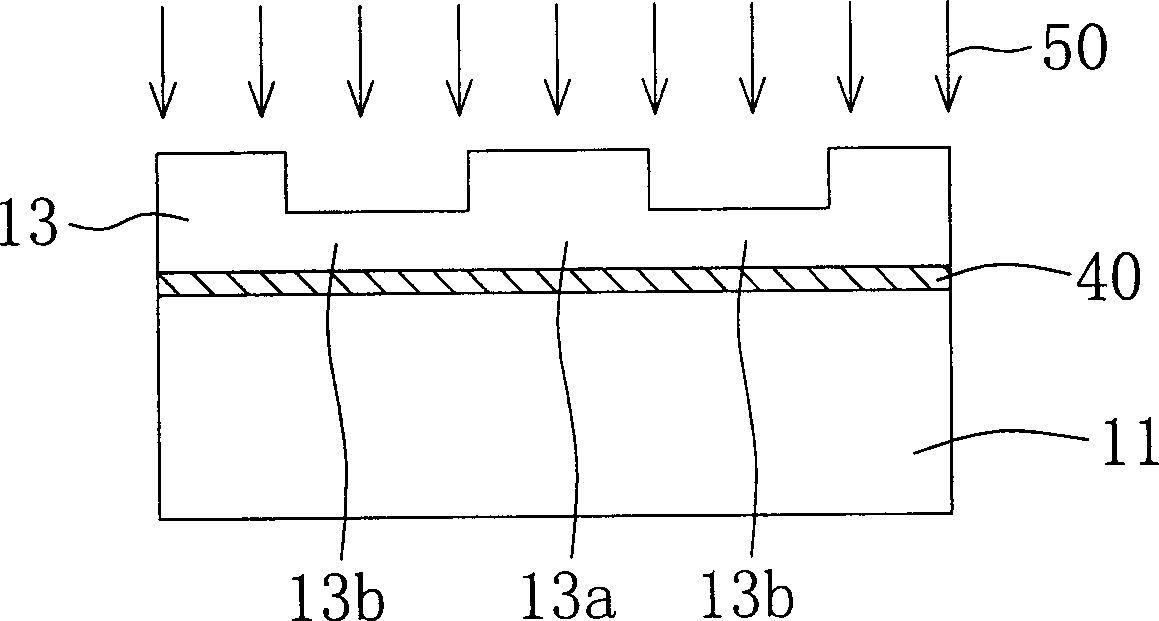Method for producing multicrystalline silicon layer
A technology of polysilicon layer and polysilicon, which is applied in semiconductor/solid-state device manufacturing, electrical components, circuits, etc., can solve the problems of reducing the electron mobility of the channel layer and affecting the electrical quality of LTPSTFT, etc.
- Summary
- Abstract
- Description
- Claims
- Application Information
AI Technical Summary
Problems solved by technology
Method used
Image
Examples
Embodiment Construction
[0018] Please refer to Figure 2A-2D , which is a flow sectional view of a method for manufacturing a polysilicon layer according to a preferred embodiment of the present invention. First, in Figure 2A In the present invention, a substrate 111 is provided, and an insulating layer 140 is formed on the substrate 111 . In this embodiment, the substrate 111 is, for example, a glass substrate or a plastic substrate, and the insulating layer 140 is, for example, a silicon dioxide (SiO2) 2 ) layer, a silicon nitride layer or a nitride layer. Then, if Figure 2B As shown, an amorphous silicon (amorphous silicon, α-Si) layer 113 is formed on the insulating layer 140 . The amorphous silicon layer 113 has at least one thick amorphous silicon region 113a and one thin amorphous silicon region 113b, and the thick amorphous silicon region 113a and the thin amorphous silicon region 113b respectively have a first thickness H1 and a second thickness H2. The first thickness H1 is greater t...
PUM
 Login to View More
Login to View More Abstract
Description
Claims
Application Information
 Login to View More
Login to View More - R&D
- Intellectual Property
- Life Sciences
- Materials
- Tech Scout
- Unparalleled Data Quality
- Higher Quality Content
- 60% Fewer Hallucinations
Browse by: Latest US Patents, China's latest patents, Technical Efficacy Thesaurus, Application Domain, Technology Topic, Popular Technical Reports.
© 2025 PatSnap. All rights reserved.Legal|Privacy policy|Modern Slavery Act Transparency Statement|Sitemap|About US| Contact US: help@patsnap.com



